Conserving Lakeland
The magazine of Friends of the Lake District | Free to members


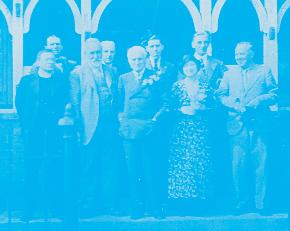




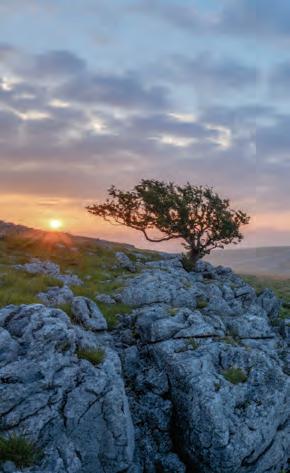















I joined Friends of the Lake District about 12 months ago, in the spring. It’s my favourite time of year in the Lakes, when the daffs are blooming, the lambs start bleating, and the lengthening days allow for long hikes along the fell tops again.
The year has passed in a flash. There’s so much we need to do to protect this complex Lakeland landscape which is constantly in danger of being ‘loved to death’, but which is still able to offer a tranquil refuge if you choose the right place on the right day.
It’s a unique place in landscape terms, but it’s also unique economically.
The National Park has about 40,000 residents, but around 20 million visitors a year. That’s an astonishing imbalance and it means our

infrastructure (scaled and funded for residents) struggles to cope.
I’ve spent the last 12 months leading a process to look at how Friends of the Lake District can deliver what’s needed for these challenged Cumbrian landscapes, starting with a consultation of our members. Long story short: you’ll see us doing more work in all the areas you told us were important, such as planning/development, water, climate, nature-friendly farming, biodiversity and transport.
An example of what we’re working on is our recent rally against the proposed development at Elterwater Quarry which you can read about on page 11. This rally was a sign that we’re reconnecting with our campaigning roots and getting out
As I stood overlooking the village of Elterwater at our campaign rally on 27th March, it was difficult not to reflect on the fact that – as with so much development in the Lakes – the proposal for an adventure centre at the quarry site was about so much more than the development itself; the question faced by the National Park planning committee was, at heart, a question about what kind of Lake District we want.
The rally came just two weeks before our sister charity, the Campaign for National Parks, released its ‘National Parks Health Check Report’, which reveals that just 6% of National Park (NP) land area is managed for nature; that between 70 and 80% of NP peatland is damaged; and that just five of the 880 water bodies in NPs
meet the highest status of ecological health. (Indeed The Lake District has seen the highest recorded number of sewage spills into water bodies of all National Parks.)
The report is a damning indictment of mismanagement of our protected places nationally, with government funding cuts that mean even the more ambitious Park authorities are unable to do much more than watch as their Parks deteriorate.
It is not only nature that is in a bad way. Our communities struggle, too. At Elterwater only a handful of homes are in permanent residency, while in neighbouring Chapel Stile the figure is thought to be around just 30%.
Of course, the one thing that is thriving – and has been since the trauma of Foot and Mouth – is the tourist pound.
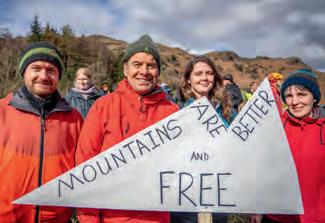
in the spring sunshine (and showers!) to protect the landscapes we all love. Thank you for being a member, and for playing your part in that.
Michael Hill Chief ExecutiveBig business has piled into Lakeland dales and villages… There’s gold in these hills.
The choice for Park planners considering new tourist developments is whether to uphold the status quo – more profits and more low-value jobs in an already inflated sector – or to heed the warning lights flashing over the health of our water bodies, of the state of nature, and of the viability of our communities. All of them can thrive again. But brave and visionary decisionmaking will be needed for them to do so. We will support our own National Park in any vision and decision that leads us there.
Dave Felton Chair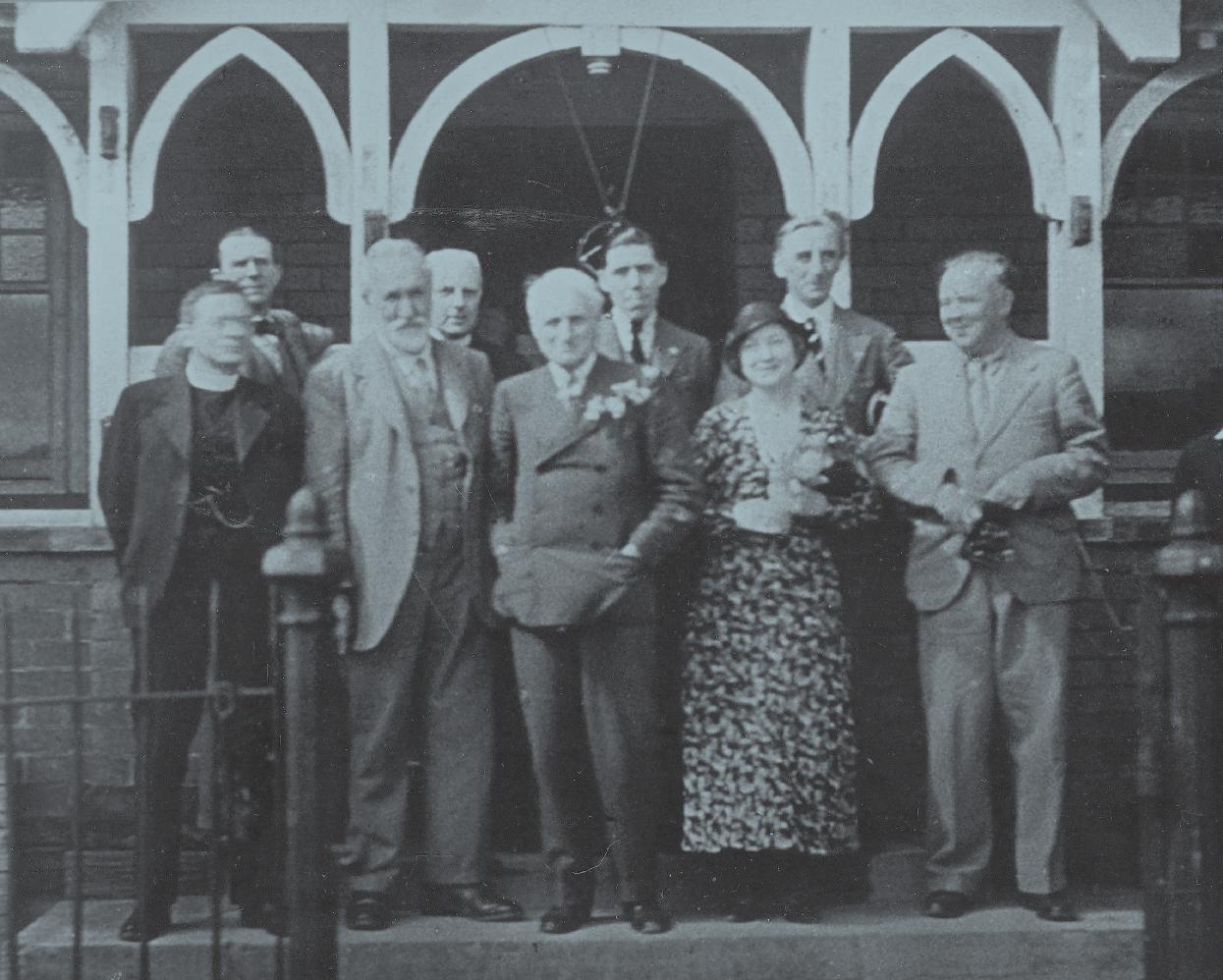
Friends of the Lake District started at a public rally in Fitz Park, Keswick, in June 1934. A group of passionate people launched an association with the aim of protecting the beauty and traditions of the landscape, while ensuring the public had access to it. They also began to campaign for the Lake District’s status as a national park.
In 1951 our campaigning finally led to the creation of the Lake District National Park – one of the first national parks in the country. But our work didn’t stop there. Today, we continue to be a strong voice for the landscape –campaigning against threats and challenges, alongside practical conservation work and projects to inspire others.
Here’s a flavour of what we’ve achieved over the last 90 years –work only made possible thanks to our members. You'll find a more in-depth look at our history on our website.

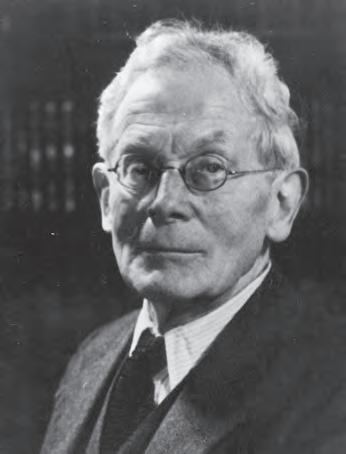 Founder Rev. H. H. Symonds, 1957
Photo: Friends of the Lake District founders, 1934
Founder Rev. H. H. Symonds, 1957
Photo: Friends of the Lake District founders, 1934
1934 – Friends of the Lake District forms at a public rally in Fitz Park, Keswick.
1936 – A major campaign saves Central Lakeland from large-scale commercial spruce plantations.
1936 – Friends attends the first meeting to lobby for the creation of National Parks.
1936 – First piece of land bought giving people access to nature at Rayrigg Meadow, Bowness.
1949 – Planners agree all power lines that damage landscape should be underground.
1951 – Our actions lead to the creation of the Lake District National Park, one of the first in the country.
1960 - Friends lobbies for powers to control the use of motorboats on some lakes.
1977 – Our first annual hedging competition to celebrate the importance of our iconic hedges.
1977 – At the Windscale Inquiry, Friends argues to minimise the impact of the power plant on the landscape.
1980 – Campaign against raising the water level at Wastwater and Ennerdale, which would permanently damage the landscape and nature of the lakes, is successful.
1980 – Our first annual dry stone walling competition is held.
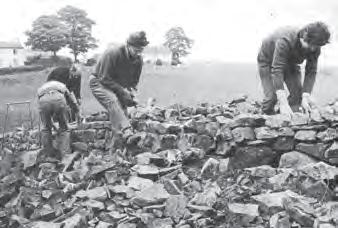
1982 – Friends grant helps to restore Dorothy Wordsworth’s garden at Dove Cottage, Grasmere.
want
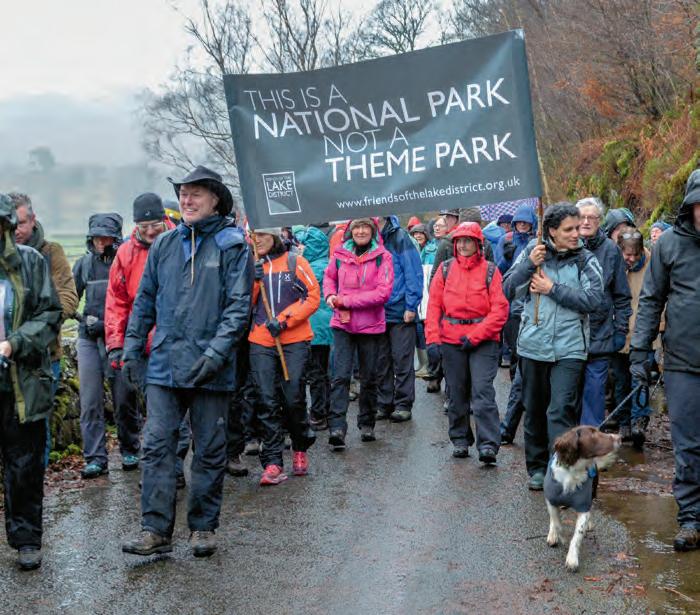
1993 – New native woodland at Staveley marks Mike Houston’s 25-year tenure at Friends.
2000 – A 10mph speed limit for craft on Windermere becomes law.
2007 – We buy the Helm, on the edge of Kendal, to improve access and introduce conservation grazing.
2010 – 60 Farming Landscapes events held at farms across Cumbria to show how farming food and the landscape are linked.
2011 – First ‘Fell Care Day’ with volunteers carrying out practical conservation at Helvellyn.
2016 – The boundaries for the Lake District and Yorkshire Dales National Parks are finally extended following our campaign, which began in 2005.
2016 – Our campaign to stop 24km of 50m tall pylons being built across the national park generates 1,000 letters in protest and extensive media coverage, resulting in National Grid resolving to put new electricity lines underground instead.
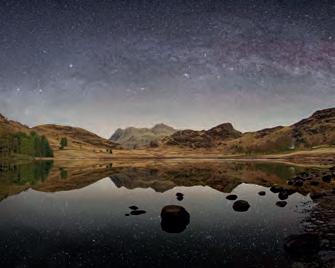
2017 – Our campaigning helps to mobilise over 3,000 objections to the zip wires over Thirlmere. The application is eventually withdrawn.
2018 – Dark Skies project launches to reduce light pollution in Cumbria.
2019 – Westmorland Dales Hidden Landscape starts in newly extended Yorkshire Dales to deliver 21 projects discovering hidden heritage.
2024 – In the light of our fight against new pylon lines in the Lake District, Government bans new overhead wires from going through all protected landscapes.
By the end of 1936, Friends of the Lake District had grown to over 2,000 members. Our informed, active membership continues to be instrumental to our success today.
We want to hear about your memories and see your photographs from the last 90 years. What do you remember about the work of Friends of the Lake District? Why did you become a member? Out of all our achievements, which do you think is the most significant?
As well as looking back, we want to look forward. What are your hopes for the future of the landscape?
We’ll publish some of the memories and thoughts we receive in our next edition of Conserving Lakeland.
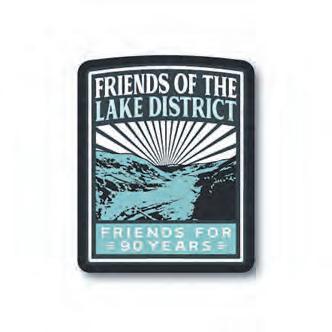
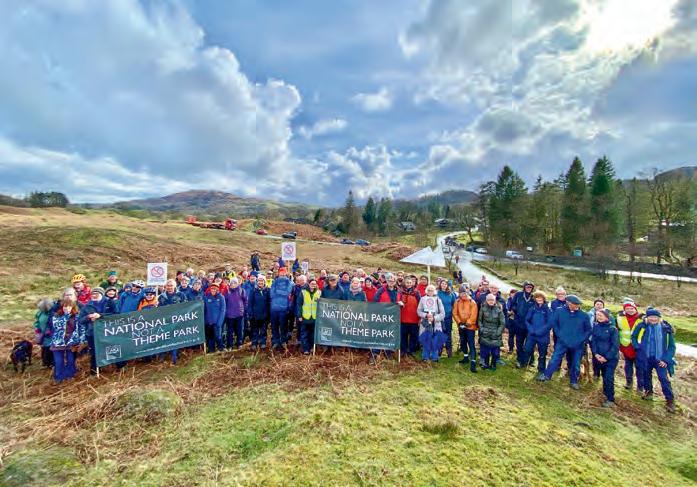
Looking for a way to mark our 90th birthday? Why not show your support and treat yourself to a limited edition 90th Birthday patch, featuring our beautiful land at High Borrowdale? Patches are available to order from our online shop for £3.75 each (free delivery). Visit friendsofthelakedistrict.org.uk/shop. A patch to celebrate our Dark Skies Cumbria project is also available online and, if you join us for our Morecambe Bay walk (see our upcoming events on pages 16-17), you can collect a free commemorative patch there too!
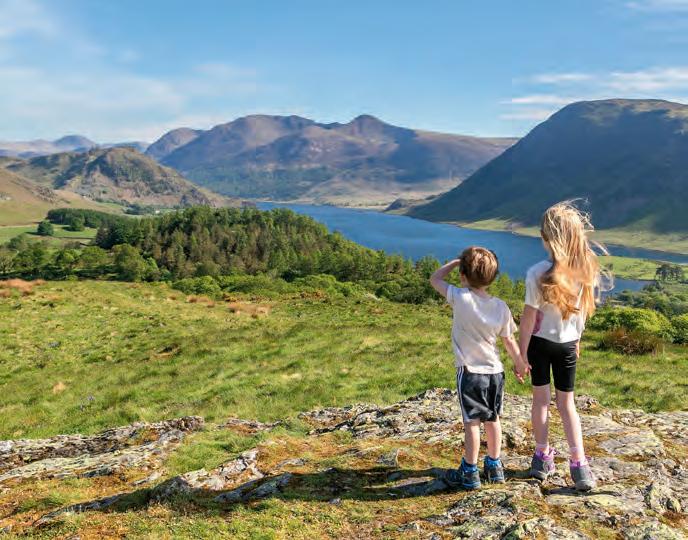
To celebrate our 90th birthday, we’re asking children and young people to design a poster to show how they think the landscape should look in the future: What are your hopes for the future? What would you want our beautiful landscapes to look like when you are 90 years old? Entries will be split into three age categories: 5-7, 8-11 and over 12s. For more information and to download an entry form visit: friendsofthelakedistrict.org.uk/ poster-competition. Closing date: Friday 16th August.
Last year’s member and supporter consultation showed people really value Friends of the Lake District’s campaigning role. It’s something we’ve been doing for 90 years and, from the start, our members have played an active role in this.
Here’s a guide to our charity’s role in campaigning and what it means in practice.
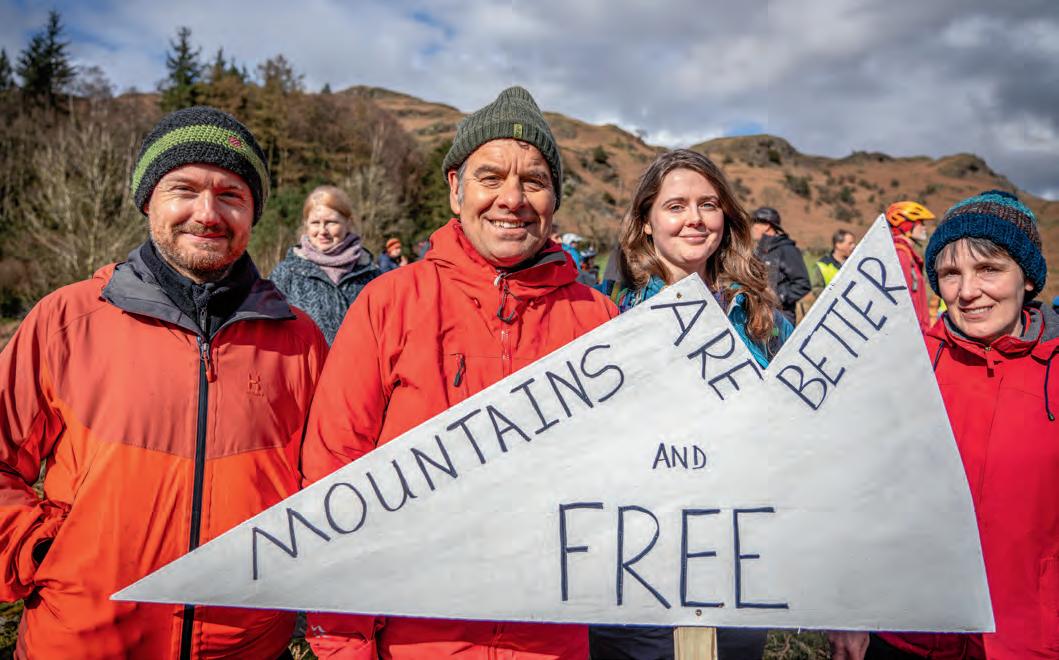
Campaigns and campaigning can mean different things to different people. For us at Friends of the Lake District, campaigns are a concerted effort to achieve a particular goal through a range of targeted and complementary actions.
Some campaigns are relatively short, lasting weeks or months. They can be fast-paced, with a firm – but not always predictable – timeline, and often involve some visible action such as a rally or protest. Examples are our campaigns to prevent inappropriate developments at Roanhead and Elterwater.
Other campaigns are longer, slower paced, and can last for decades, such as our work to prevent conifer plantations in the 1930s which led
to our policy responses, years later, to consultations on forest design plans and new woodland creation. Another example would be making the case for rural housing issues to be more appropriately covered in policy and guidance documents. This kind of
campaigning is about repeating key points in response to planning proposals, and local and government consultations on policy.
Our campaigns aren’t always about stopping something happening. Often, they are about starting

something positive like our Dark Skies project or extending the national parks. We also often work with other organisations and groups as part of our campaign work. The Lakes and Yorkshire Dales National Parks extensions are an example of collaborative campaigning, where we worked with partners including the charity Campaign for National Parks.
We are an independent charity, and our ‘landscape’ remit involves a wide
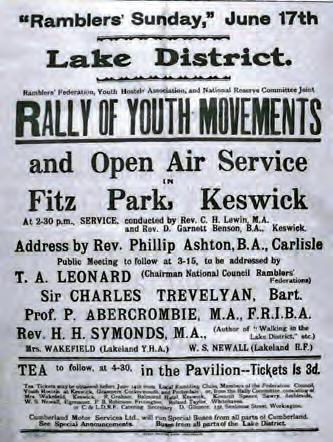
range of topics. This means we are not limited as to what we can and cannot comment on in the same way that statutory bodies or organisations with narrower remits are.
We have a small but professional staff team that drive our campaign work, keeping an eye on planning proposals, commenting on policies, and helping organise protests, for example. Our policy and planning officers have a depth and range of expertise, helping to inform our work. We also have a communications team that can quickly get information issued to the press, onto our website, out in our e-newsletter and posted on social media.
Most importantly, we have around 6,000 supportive members who help amplify our campaign work and who provide vital support by contributing to our fundraising appeals.
A lot of our campaigns are based on planning issues, but many relate to policy too. We can use planning mechanisms to influence the development of local and national plans, and to ensure that
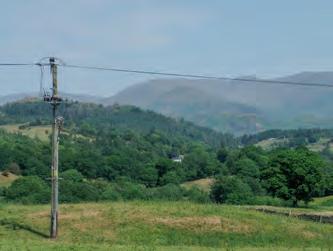
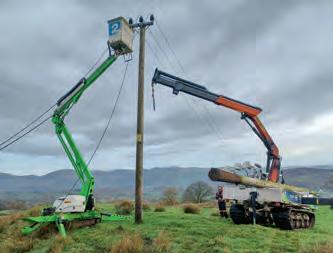
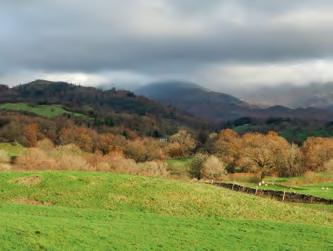
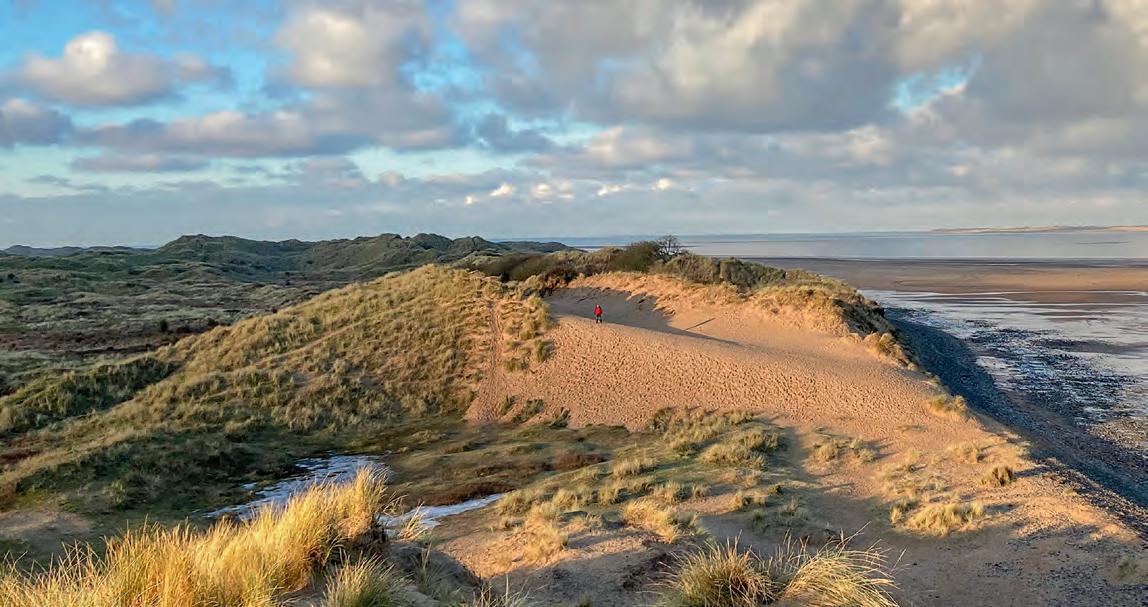
new planning policies cover landscape issues effectively. We also respond to non-planning consultations on policy topics such as forestry or water management, common land, transport and access. An early example of policy campaigning is our work to ensure inclusive access to the Lake District and improving the public rights of way network in order to achieve this.
Even where our objection is from a planning perspective, there is a policy reason behind our concern about the proposals. Elterwater and Roanhead are good examples of this. As they are both planning applications, we need to respond to them within the relevant planning processes and planning policy frameworks, but our responses are always well researched and informed by our policy stance, for example, promoting a shift to sustainable travel or respecting the cultural heritage of the area.
Our Dark Skies project is a campaign with a set of concerted actions aiming to raise awareness of the importance of dark skies and to achieve a net reduction in light pollution across Cumbria. We hope to achieve this by influencing local and national policy that affects lighting, responding to
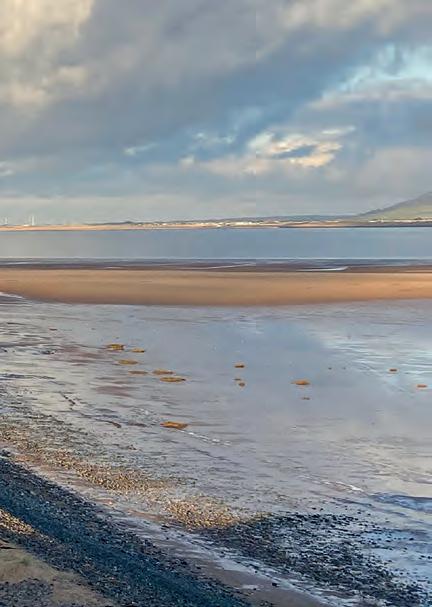
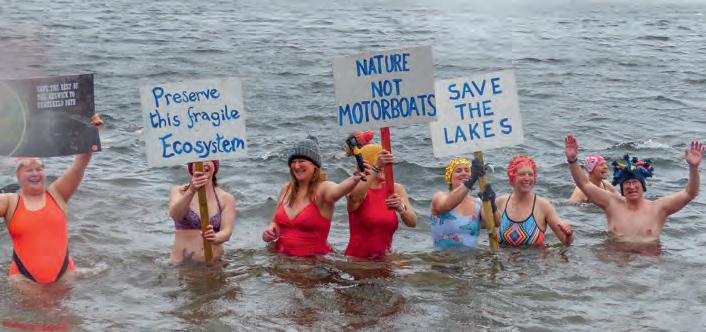
planning applications and raising awareness through events such as the Big Switch-Off.
We have also been campaigning to underground overhead lines since the 1930s. Following our report in 2003, ‘A Clear View’, Ofgem established a fund for electricity companies to underground wires and poles within protected landscapes. Friends continues to work with Electricity North West, National Parks and National Landscapes to agree undergrounding schemes as part of our Overhead Wires project.
New planning proposals and policy changes are put forward all the time. The planning and policy team keep abreast of key goings-on in our topic areas. This means we can respond to proposals or changes quickly and in an informed way. Using our landscape remit and policy positions, we make judgements on which of the many local and national consultations or proposals to respond to and how. When responding, we also consider what issues our members and supporters are particularly interested in, and which issues we should tackle another day or are for other organisations to lead on.
We work closely as a team, sharing our expertise and ideas – especially as there is often a lot of overlap between topics. For instance, it is impossible to look at issues such as transport, tourism and access in isolation when considering their impact on the landscape.
We certainly don’t object to every planning application. In 2023, we responded to 35 planning applications out of a total of 7,625 valid applications received by all the Cumbrian Planning Authorities. This means that we only responded to 0.5% of all applications, and we only objected to 0.3% of all applications.
We couldn’t do what we do without the support of our members. You can get involved in campaigning in a number of ways:
• Participate in public consultations seeking views on local or national policy proposals, or on planning applications.
• Demonstrate the strength of feeling about an issue by writing letters or attending protest events.
• Help dispel misunderstandings about Friends of the Lake District’s remit among friends and family and on social media. You could explain that our work is Cumbria-wide, for example; that we are not against all proposals; and that we are often the instigators of positive change.
• Support our ongoing campaign work by donating to the 90th Birthday Appeal or taking part in the Morecambe Bay Walk fundraiser.
We are grateful that so many of you share our concern for and love of the landscape. Our teams are working across planning and development, water, climate, nature-friendly farming, biodiversity, transport, and more, prioritising planning applications and policies where there is the greatest threat of impact on the landscape. Read on for a whistle-stop tour of our current work.
How do we collectively reduce carbon emissions across key polluting sectors in Cumbria such as transport, housing, agriculture and land use, construction, and waste management – all of which have significant influence on the county’s greenhouse gas emissions? This was a key question addressed at the first Zero Carbon Cumbria Summit, held in March, attended by our policy officer Kate Wilshaw. Under the Zero Carbon Cumbria Partnership (ZCCP), the private, public and third sectors are working together towards achieving Net Zero by 2037. Actions supported by summit delegates included communicating to and inspiring employees and clients, policy change at organisational level, sourcing funds, and contributing to the capacity and capability of the partnership. Knowledge sharing, and the role that national and local government can play in enabling legislation and policy that facilitates climate action and sustainability, were also in focus.
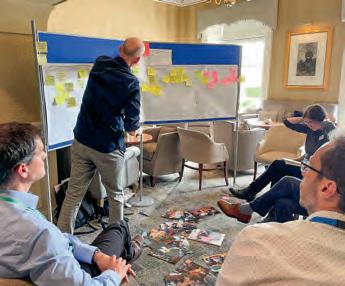
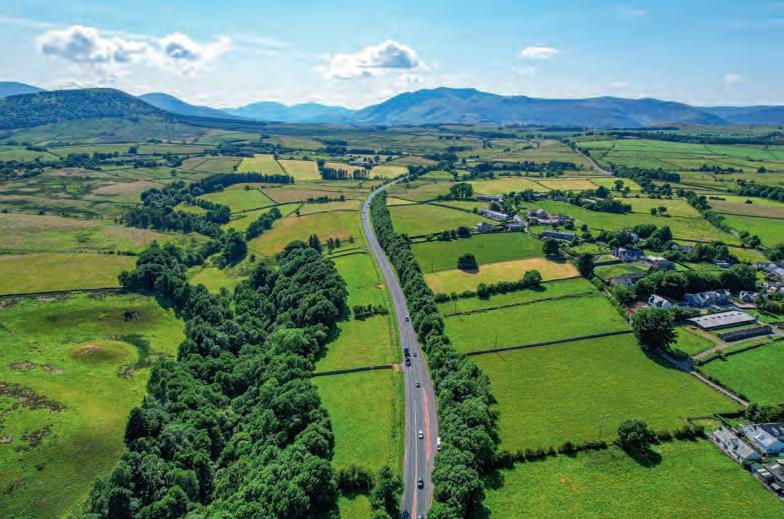
In contrast to the hugely positive Climate Summit, we are disappointed by the Secretary of State for Transport’s short-sighted decision on the A66 TransPennine upgrade. The project, given the go-ahead in March, will see existing single carriageway sections of the A66 between the M6 at Penrith and the A1(M) at Scotch Corner upgraded to dual carriageway, as well as junction improvements and minor improvements to existing sections of dual carriageway.
The dualling of the A66 will significantly increase carbon emissions because of construction, increased speed limits and increased traffic generated by the improvements. The work is calculated to add 4% to Cumbria’s greenhouse gas emissions. This makes little sense at the very time Zero Carbon Cumbria is working to reach its goal.
The transport headlines for 2024 aren’t all bad. Stagecoach announced timetable changes that will increase the number of trips made using public transport – reducing congestion and increasing the sustainability of travel, particularly within the National Park.
There are also some significant improvements facilitated by UK Government funding from Westmorland and Furness Council as part of their Bus Service Improvement Plan. Head to our website transport section for full details and to download a guide to travelling the Lakes by bus.
The national parks’ statutory purposes are to conserve and enhance natural beauty, wildlife, and cultural heritage, and to promote opportunities for public understanding and enjoyment of the national parks’ special qualities. We believe these are best upheld by encouraging meaningful connections with the landscape. This is why we held a rally against the proposed Zip World attraction in Elterwater village. Around 100 of you braved a showery day to join us.
The Lake District National Park Authority voted on the proposals in May. The votes were split with three for and three against the plans, but as the chair's vote was in favour, the motion to accept the proposals was carried. Obviously, we were disappointed by the decision and you can read our full response on our website.
One of our concerns is that by allowing developments of this type, the Lake District risks becoming a backdrop for attractions that are unrelated to it. Artificial attractions have a short shelf-life and a limited ability to help people genuinely enjoy and understand what’s special about this area. They create one-sided relationships based on consumption and exploitation of the landscape for financial return from unrelated thrills.
Elterwater isn’t the only place affected by this type of proposal. We also await the outcome of plans for a luge track and chair lift in the Eden valley.
Although not in a protected landscape, it too threatens to bring significant traffic and an inappropriate artificial attraction to a quiet rural area.
Friends of the Lake District campaigned for a national undergrounding allowance by Ofgem in the early 2000s – meaning that electricity providers were able to access funds to help them put wires underground. Not only does undergrounding help enhance the character of the landscape, it also enhances infrastructure resilience to extreme weather.
Last winter, nearly 5km of lines were undergrounded across Cumbria, including schemes at New Barns, North Plain, and Mungrisdale. We've also challenged ill-conceived phone mast proposals, advocating for more thoughtful telecommunications planning.
We have submitted our response to the latest proposal for a holiday park on the Furness peninsula, supplemented by a document drawn up by Landscape Architect Doug Harman, directly challenging the Landscape and Visual Impact Assessment in the application. Many other organisations have also submitted strong objections. We don’t yet know when this proposal will go to planning committee, but we plan to speak at the meeting alongside members of the local community when it does.
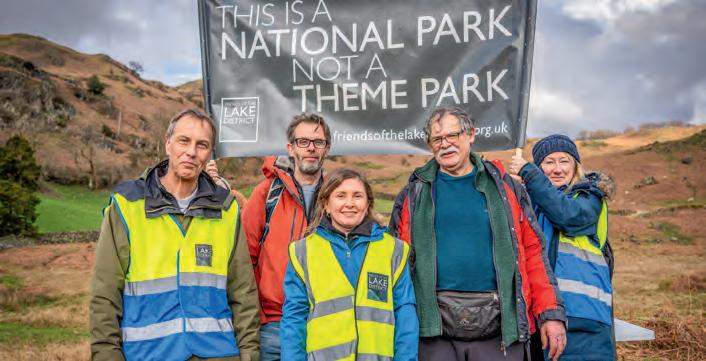
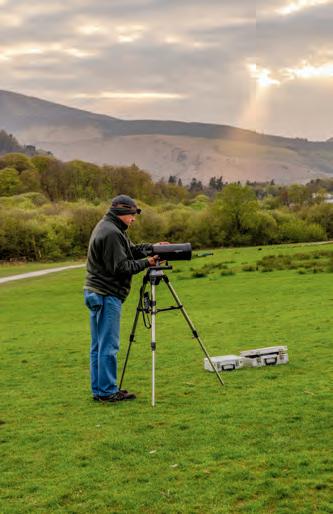
Our successful Big Switch-Off events in Ambleside, Grasmere and Keswick saw hundreds of lights extinguished by councils and businesses. We’ve also helped to persuade Sedbergh Parish Council to replace 24 old street lights with wildlife-friendly ones while Yealand Primary School upgraded to Dark Sky compliant lighting, and United Utilities reconfigured their lights at Watchgate Treatment Works to reduce light pollution.
The Planning Inspectorate is factoring our responses to applications for fencing on common land into their decisions. We balance nature and landscape conservation considerations with those on public access and protection of heritage.
United Utilities is still developing plans to decommission a series of redundant reservoirs in the North and West Lakes. Planning applications are expected this year for Crummock Water, Over Water and Chapelhouse. We are broadly supportive of the removal of man-made infrastructure in the landscape, but we await the detail on these. Follow our updates in future issues and online.
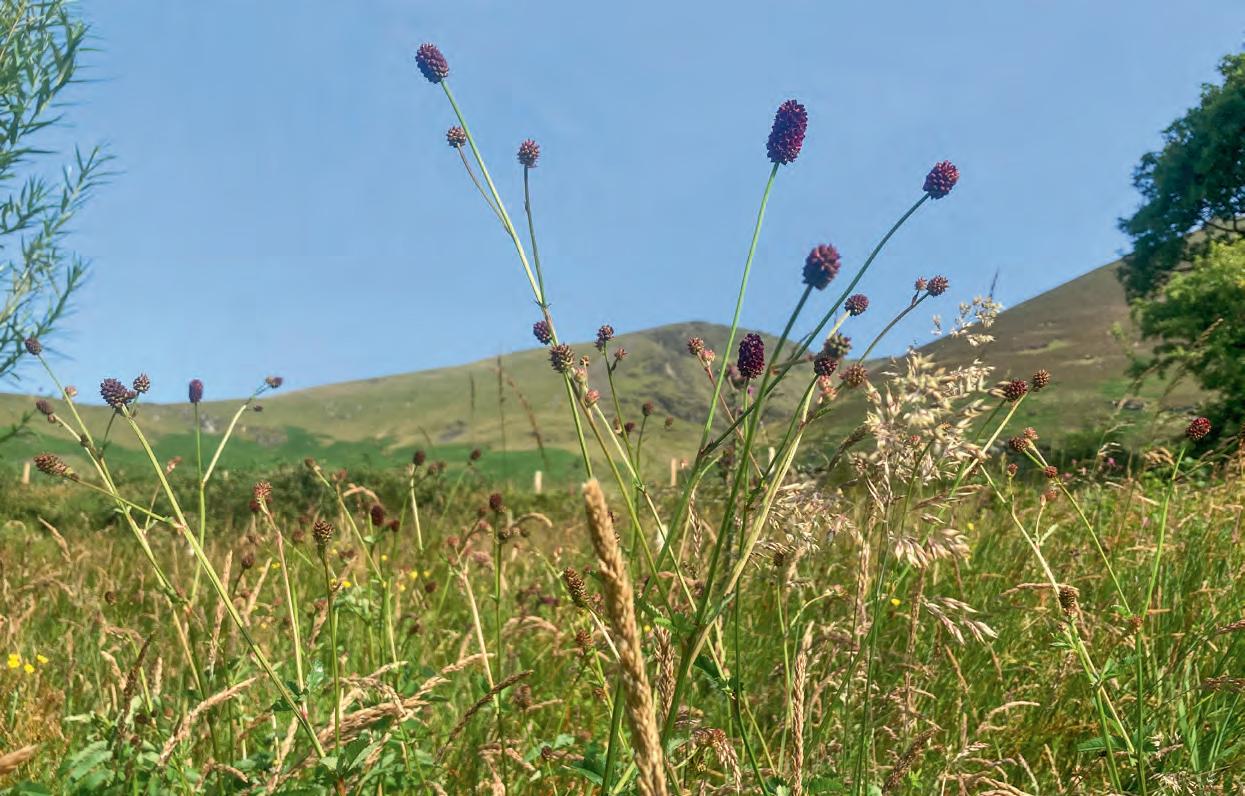
Dam Mire Wood is a two-hectare parcel of land nestled in Threlkeld. Friends of the Lake District acquired it in 2021 through the generous gift of local resident and Friends member, Professor Mike Hambrey. We hope it will grow into a woodland sanctuary as the trees mature.
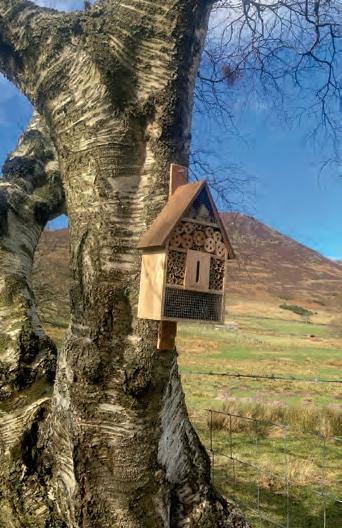
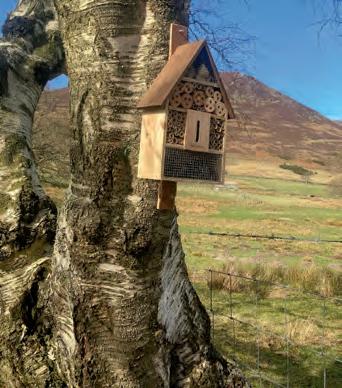

In the short time we’ve owned it, Dam Mire Wood has been transformed into a welcoming retreat for all. We’ve planted over 1,000 trees, installed leaky dams to slow the flow of water,
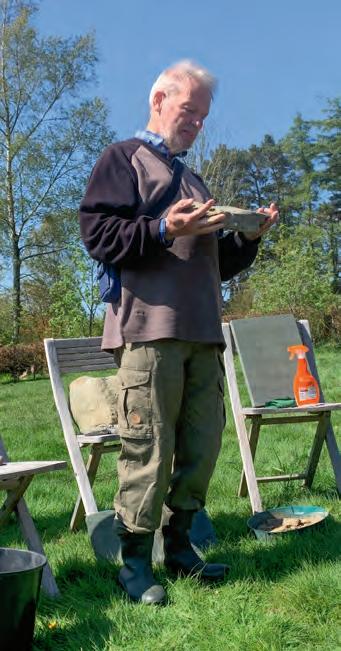
and constructed a new access route complete with a larch bridge. We’ve spent a lot of time asking the local community and the public what they’d like to see in the wood. We’ve also been setting to work with volunteers; a lot of what we’re currently doing is aimed at creating new and varied habitats for wildlife.
Some of the highlights so far include: establishing a circular path, ecological and bird surveys, planting wetland plug plants, putting up new bird boxes and a tawny owl box, and the creation of a new hedge and willow den with the help of Threlkeld School children. The school uses the site regularly to experience adventure and wildlife in their forest school sessions which we’re a part of. In the future, we’ll continue to enhance the site for both wildlife and people. Some of the local community’s ideas, which we're considering, include setting up a small wildlife pond and hosting more events and workshops. We also continue to learn about the history of the site and would like to set up more wildlife surveys.
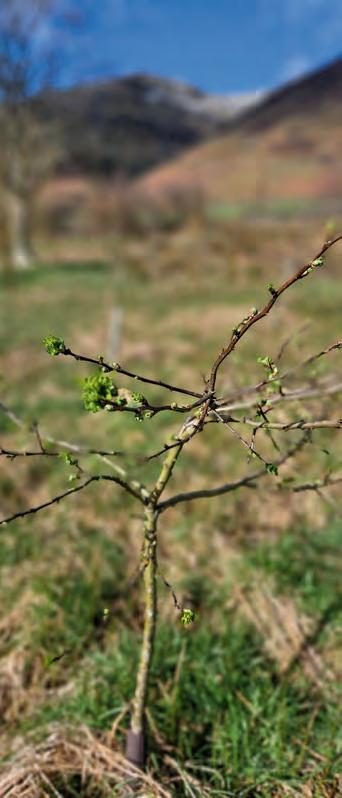
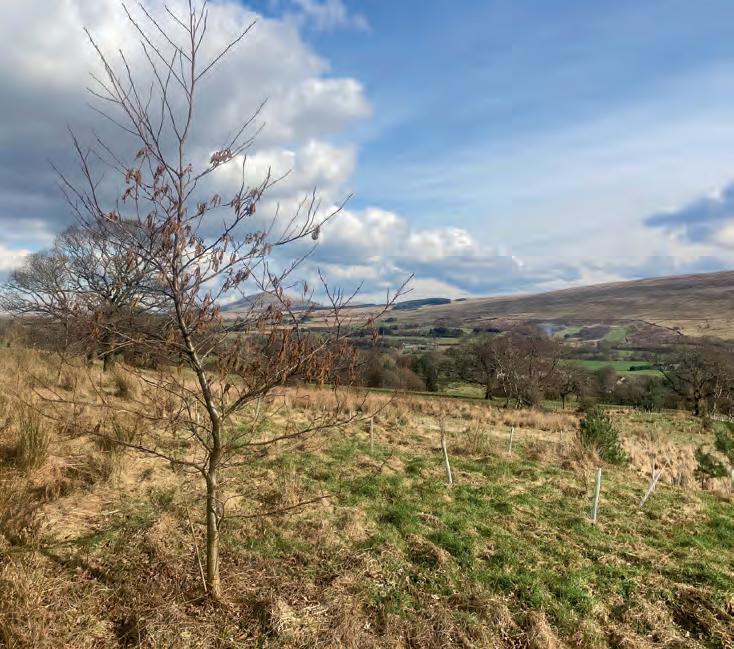
Simply visit and enjoy Dam Mire Wood, which is just off Blease Road in Threlkeld, or join us for a workparty. We take on tasks such as tree maintenance and wall repairs. Visit the events section on our website for dates and to sign up.
If you have a knack for research or expertise in plant and wildlife surveys, then we’d love to hear from you. Follow updates about Dam Mire Wood through our Land Manager, Jan Darrall. Jan writes a weekly blog, the Land Manager’s Diary, which you can find on our website.

David Evans has led our Westmorland Dales Landscape Partnership Scheme over the last seven years, but that’s only a fraction of his 40 years working on landscape and conservation projects. Here, he reflects on his experience and the themes that can facilitate success.
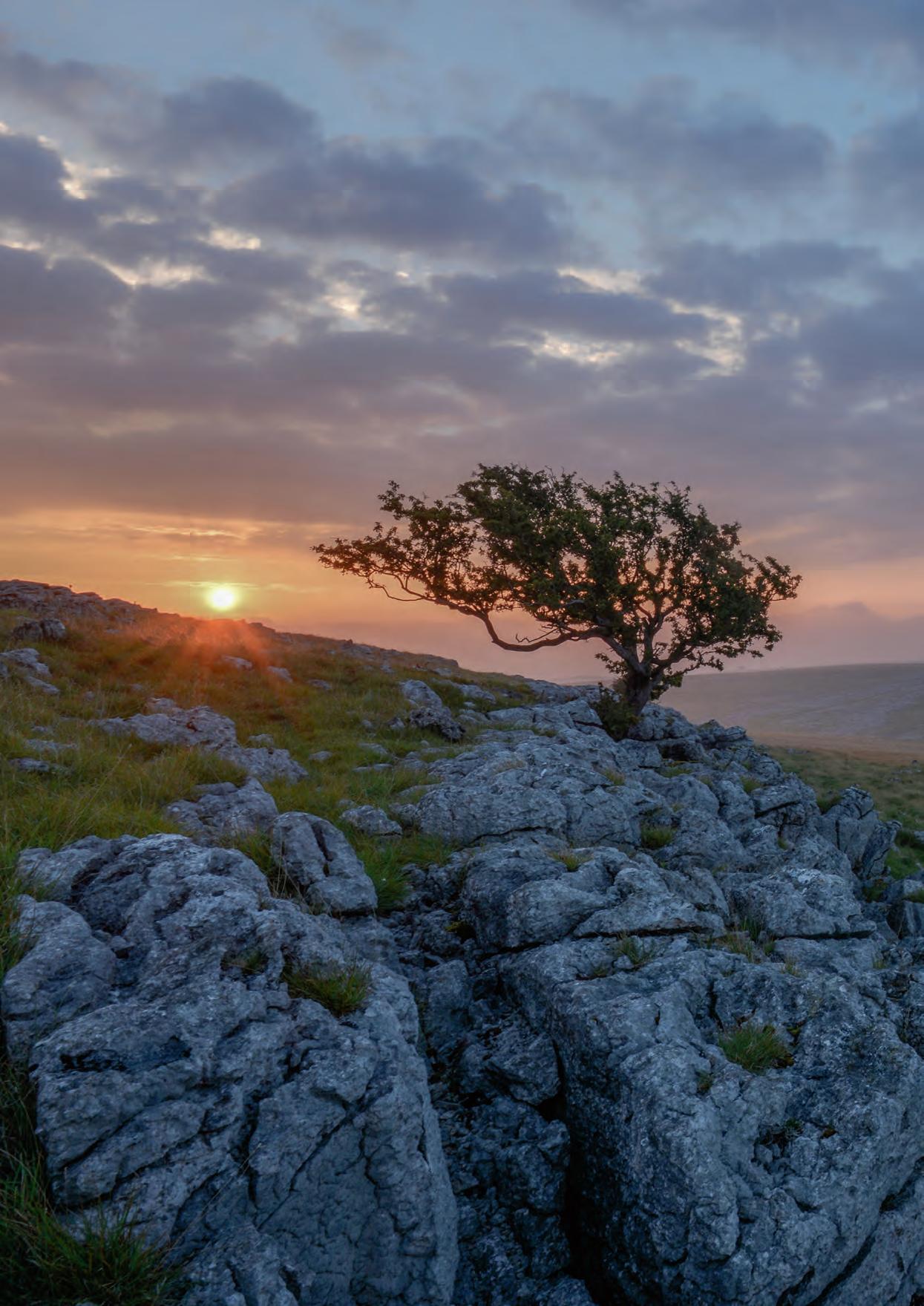
“I started my working life as a landscape architect in Bristol, a far cry in many ways from working in a national park at the end of my career. But some themes have remained constant throughout.
“I’ve always believed that landscapes close to where people live are just as important as those that are protected. Working around Warrington, Widnes and Runcorn showed me that people don’t need to travel to Snowdonia or the Lakes to enjoy the countryside. A rich cultural heritage, some stunning wildlife, and even some tranquil spots are often easy to access from the doorstep. Balancing our investment in greenspaces is vital; a public park can provide measurable value to people, nature, and climate in the same way as national parks.
“Partnerships and collaboration are
vitally important at a landscape scale, whether in the Mersey Valley, the Avalon Marshes, or the Westmorland Dales. That means engaging with the full range of interests across environmental, community and economic sectors. This approach is beneficial in tackling real challenges such as climate change and biodiversity loss, while feeding multiple perspectives into a shared vision for the future. Engagement with the communities that live and work in these landscapes is as important as with those who visit them.
“I also believe that the design, conservation, and management of our landscapes must be ecologically informed. Ensuring that we’re working with nature rather than against it, while not being too ecologically purist. Where would our upland farms be without the much-maligned sycamore, or our urban
squares without the London plane? Both are officially non-native trees.
“Finally, learning from each other is critical. Friends of the Lake District’s success in restoring upland meadows draws heavily on pioneering work undertaken in the 1980s in places like Bristol and Merseyside, with some very different but some very similar challenges.
“Learning from different people has sat at the heart of the successful Westmorland Dales Landscape Partnership Scheme. Although it has come to an end, there’s plenty to delve into on the Friends of the Lake District website, or you can join me on one (or more) of a series of walks in the Westmorland Dales this summer.”
See page 16 for details about this year’s guided walks.
To find out more about the Westmorland Dales Landscape Partnership Scheme visit: www.friendsofthelakedistrict.org.uk/westmorland-dales-hidden-landscapes-partnership
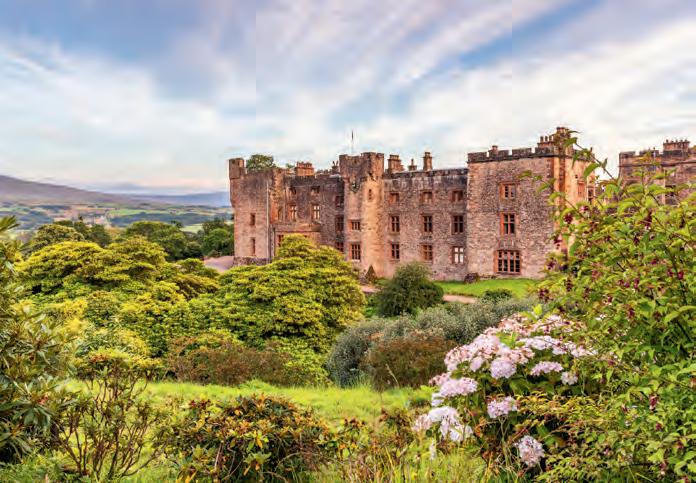
We’re pleased to share some exciting new member benefits with you. As well as discounted access to Brantwood House and Dalemain Mansion, your Friends of the Lake District membership now grants you discounted access to Muncaster Castle and Morland House.
We’re also welcoming two new Cumbrian partners on board. Enjoy a 10% discount on Pure Lakes skincare when purchased online and take advantage of a special offer from Cumbria and Lakeland Walker magazine – three trial issues for just £1.
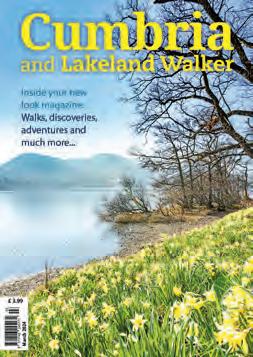
Keep an eye out for further details and discount codes, which will be sent along with your next membership card. Email info@fld.org.uk with any questions.
It was a real privilege to get together in February at the Big Switch-Off in Ambleside and explore our dark skies work and the role our new lighting guide is playing with local councils. We also met in early May to explore Dam Mire Wood and find out more about our plans for the site. It’s always a joy to come together in such a meaningful way.
We’re
thrilled to introduce our newest Corporate Members
There’s still plenty of opportunities to join us this year.
Our first ever virtual member meet: Wednesday 3 July.
Dive into the topic of tranquillity and find out more about some new virtual tours of our land.
Annual AGM: Friday 13 September, Keswick.
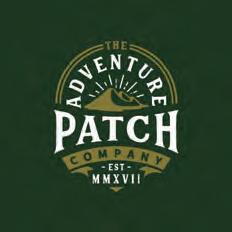
More details about the AGM will be announced soon but information about how to book your place at both events can be found on our website.
The Adventure Patch Company is a small, family-run British business. They specialise in creating hiking patches, pins and other gifts celebrating the beauty of the UK hills and mountains, national parks, trails and outdoor adventures. We’re proud to partner with them for our new patch collection. See: www.adventurepatch.co.uk

Redknot Campers is a one-stop shop for all your campervan needs. Their mission is to deliver top-notch campervan conversions and products that allow you to explore beloved destinations while minimising your impact on the planet. Start planning your eco-friendly adventure at: www.redknot.co.uk
We’re very grateful to our Benefactor Members for their continued support: John Berry, James Brockbank and Louise Ronane, John Campbell, Richard Coates, Philip Cropper, Margaret Haigh, John Harris, Peter Hughes QC, John and Margaret Jackson, Brian Leigh-Bramwell, Rosamund Macfarlane, Jim and Sue Martin, Elizabeth Reddaway, David Salter, and Taysia and Matt Malone.
Join us for one of our many events celebrating the landscape of Cumbria and the Lake District and discover more about many amazing places. To book, visit: www.friendsofthelakedistrict.org.uk/events
Our weekly programme of volunteer workparties is now available on our website. Join us for a day of volunteering at one of our properties, including High Borrowdale, Sweden Wood, Mazonwath, Dam Mire Wood, The Helm, Greenbank Wood, Middle Bleansley, or Rusland Woods. Volunteers of all skill levels are welcome to come along. You may get wet and muddy, but there'll be cake, laughs and some wonderful scenery.
Our Leaders' Landscape Training Sessions are aimed at outdoor practitioners to help deepen their understanding of Cumbria’s landscapes and enable them to pass on their new-found knowledge to those with whom they work.
Friday 21st June
Life of the Hill-Bred Fell Pony
Friday 28th June
The Thirlmere Resilience Project, delivering more for people and nature using nature-friendly farming
Friday 9th August
Understanding Tranquillity
Wednesday 14th August
The Westmorland Dales: its natural and cultural heritage
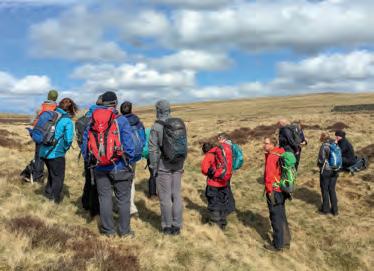
£5pp
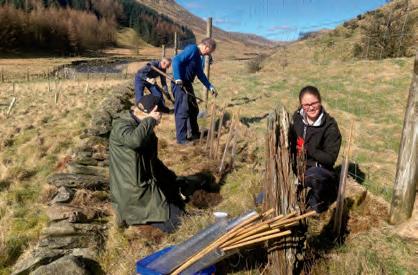
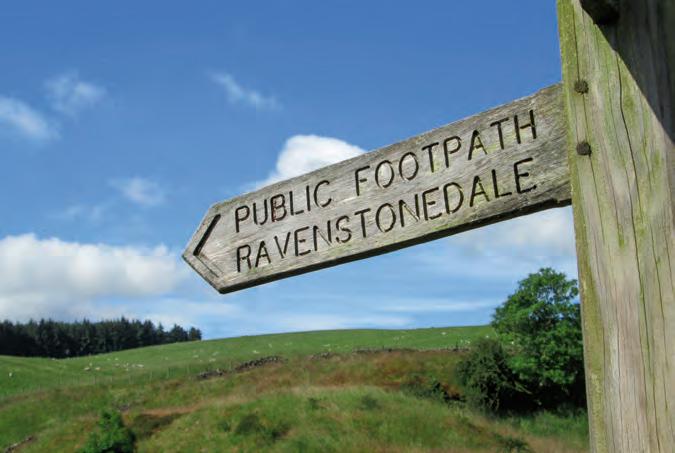
Our volunteer-led guided walks are gentle to moderate and suitable for most walkers. Walks are charged at £5 per person. Visit our website for more information and to book your place.
Wednesday 5th June, 2pm | Ravenstonedale
A gentle three-mile stroll along public footpaths and quiet country lanes from the village of Ravenstonedale to Bowber Head. A chance to enjoy the wildflowers in the meadows and verges and see the river restoration work carried out on Scandal Beck.
Saturday 27th July, 2pm | Little Asby Common
A moderate four-mile walk around Little Asby Common on tracks and across some pathless, uneven terrain. An opportunity to enjoy the views and explore the geology, archaeology and natural history of the area.
Wednesday 18th September, 2pm | Knott & Great Asby Scar
A moderate four-mile walk from Knott Lane to Great Asby Scar National Nature Reserve on tracks and across some pathless, uneven terrain. The walk includes the limestone pavements of Great Asby Scar, the quarries at Knott, and Gamelands Stone Circle.
Saturday 13th July
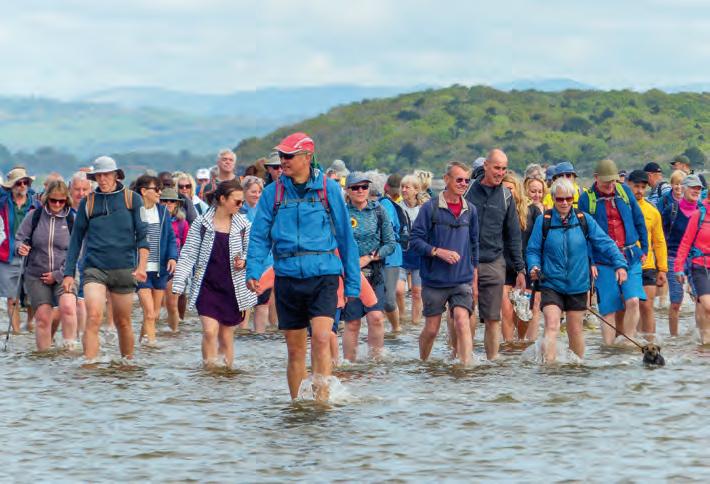
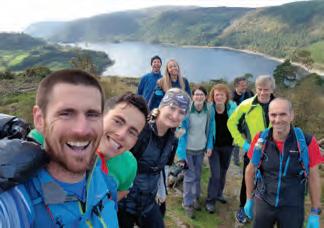
Virtual Member Meet
Wednesday 3rd July
Open to members and nonmembers who would like to find out more about our work. Starts at 7pm.
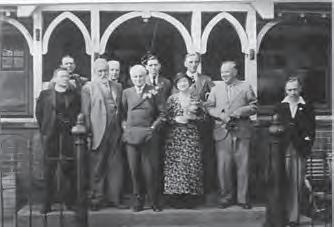
Annual AGM
Friday 13th September
In our 90th anniversary year, our AGM will look back at our past achievements and forward to our future hopes.
Join us on this unique sponsored walk across the sands of Morecambe Bay to raise money to protect Lake District and Cumbrian landscapes. Led by the official guide Michael Wilson, you'll cross the largest expanse of tidal mudflats and sand in the United Kingdom. The roughly seven-and-a-half-mile walk is suitable for anyone who is comfortable walking over uneven terrain for three to four hours. Book now for this unforgettable experience and help us continue to preserve and enhance Lakeland landscapes. www.friendsofthelakedistrict.org. uk/morecambebaywalk
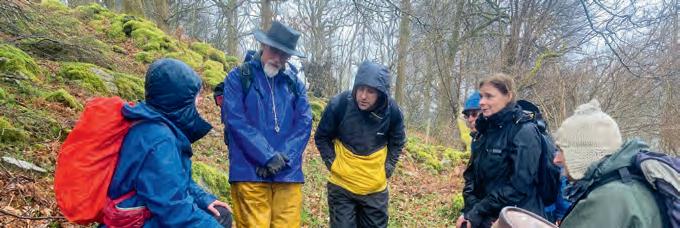
Specialist Training for Volunteer Surveyors
Monday 15th July – Bees, Wasps & Pollinator Identification Tuesday 17th September – Mammals & Track Identification Monday 7th October – Fungi Identification
We're running a series of specialist subject training events for volunteer surveyors. We ask that attendees commit to help survey our land over the next few years using your new knowledge and skills.
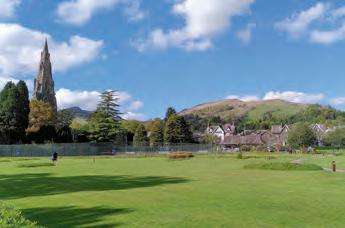
Kirby Lecture
Friday 11th October
To be held in Ambleside. Keep an eye out for more information on this year’s topic and speakers.
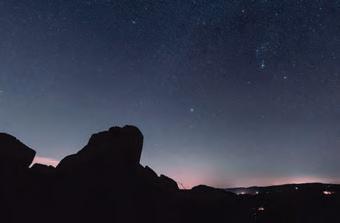
Dark Skies Festival
Friday 25th October to Sunday 24th November
A programme of events celebrating our magnificent dark skies.
See if you can find all 29 Lake District peaks!
Base Brown
Binsey
Black Combe
Black Fell
Bonscale Pike
Brandreth
Branstree
Brim Fell
Brock Crags
Carrock Fell
Catbells
Catstye Cam
Causey Pike
Dow Crag
Esk Pike
Great Calva
Great End
Great Gable
Harter Fell
Helm Crag
High Stile
Long Side
Old Man
Red Pike
Red Screes
Skiddaw
Stony Cove
Walla Crag
White Side
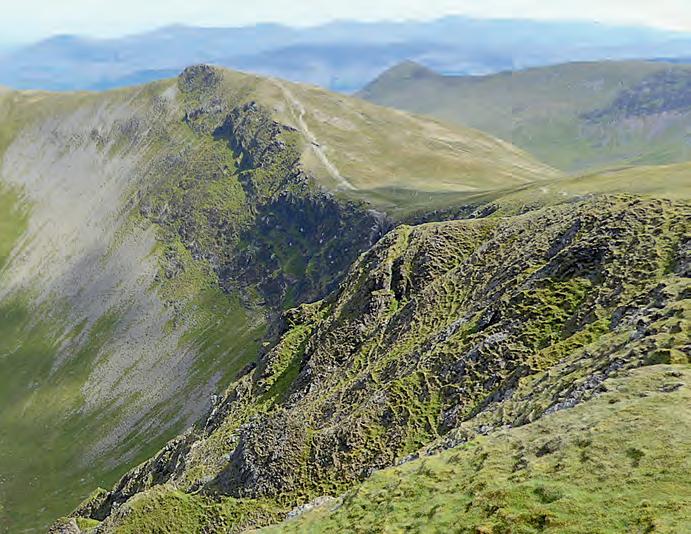
If you do, write your answer on a postcard and send it to Where is it?
Competition, Friends of the Lake District, Murley Moss, Kendal, LA9 7SS or email christian.lisseman@fld.org.uk. One winning entry will receive a copy of ‘Lost in the Lakes’ by Tom Chesshyre, reviewed on page 19. Closing date 30th August 2024.
The photograph in the last issue of Conserving Lakeland was of Melbreak reflected in Crummock Water, taken by Rosamund Macfarlane. The winner was Mrs D. Prior. Thank you to everyone who took time to enter.
If you have a photograph that you would be happy to share for a future competition, please send it to christian.lisseman@fld.org.uk with this subject line ‘Where is it? photo’.
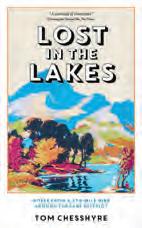
Lost in the Lakes: Notes from a 379Mile Hike Around the Lake District
Tom Chesshyre
Travel writer Tom Chesshyre’s tale of a Lakeland adventure brings out the complexities and tensions present in the area. Yes, we’ve got William Wordsworth’s daffodils and uplifting views, but we also have an industrial past. And while the landscape is undeniably romantic, there are locals being pushed out by second home ownership, and major issues around transport.
I really enjoyed his telling of encounters with locals, hikers and fell runners, and farmers. Their lived experience means this stand-out book could be argued out of the travelogue section and on to the social history shelves.
That’s not to say there isn’t plenty of detail about his walking routes. The Times Literary Supplement compared him to Helen Fielding’s Bridget Jones, drawing a parallel between his careful tracking of steps and her recording of wine and cigarettes.
I’d like to draw a parallel too, to the challenges Friends of the Lake District is tackling on climate, water, nature-friendly farming, transport, and planning. In his afterword, Chesshyre says he’ll leave to others ‘sweeping conclusions, grand statements about the meaning of the Lake District and its place in modern Britain’. But those issues all come up during his encounters. Whether you’re invested in the future of the Lake District, or a keen Wainwright-bagger, this book will provide inspiration, and perhaps a little challenge too.
Review by: Clare Coxon
Publisher: Summersdale (£10.99)

At the very start of this magazine, our Chair, Dave Felton, references the sobering findings in the Campaign for National Park’s ‘Health Check Report’. Those statistics could leave us all in a state of despair. That’s exactly how the narrator of Jean Giono’s The Man Who Planted Trees feels about the desolate and seemingly infertile hills and lifeless villages he encounters on his travels in Provence in 1910.
Enter Elzeard Bouffier, shepherd and epitome of individual action. During the narrator’s first stay with him, Elzeard sorts and plants hundreds of acorns during his walks across the surrounding landscape. The story tracks the narrator’s return visits to Elzeard as the young forest spreads over the valley.
On through 30 years, which takes in World War I, the forest becomes verdant and is enjoyed by a thriving local population; transformed by 100,000 seedlings planted by the shepherd.
It’s a short read at just 46 pages and demands little time or energy but has long-lasting impact. I first read it years ago and it sits in my mind as a reminder of the power of the individual.
In the last 15 years, Friends of the Lake District volunteers have planted around 25,000 native broadleaved trees with the aim of forming 44 hectares of new woodland once established. Where we can take action that has multiple benefits for the landscape, nature, and people, we should. Add Jean Giono’s story to your reading list, and then sign up for a workparty!
Review by: Clare Coxon
Publisher: Vintage (£7.99)
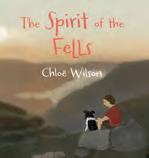
This is a captivating adventure that took my six-yearold son Alfred on a journey through the mountains in the eyes of legendary fell runner, Joss Naylor MBE.
With a little help from his mum, Alfred read this book over a few evenings, taking in the beautifully illustrated pages and learning a little about freedom and endurance.
Through the life of Joss Naylor, young readers are introduced to the world of fell running, where the mountains become playgrounds and challenges to conquer. Alfred was intrigued by Joss's early start at age four, which sparked his own sense of adventure. The illustrations are very authentic and reflect the colours of the Lakes. Some children may prefer brighter and bolder pictures, but we enjoyed them as they do really bring the story to life and reflect its true nature.
Alfred wanted to know more about why Joss ran for “days and nights, and weeks and weeks.” We liked the invitation to try Joss’s challenge and the link to a digital platform to record this. The reality of us getting to Wasdale to do this would be tricky, but we’d try something closer to home and take on Joss’s tips for running which include “dig in if it gets hard, the good feelings will come soon” and “don't forget to tie your laces”.
Overall, this is a brilliant read for sixto-eight-year-olds that will fuel their spirit for adventure in the outdoors.
Review by: Amy and Alfred Froggatt Publisher: Wrybill Books (£7.99)
Don’t forget to take part in our 90th Birthday Children’s Poster Competition! Details on page six.
For 90 years, we’ve been dedicated to protecting and enhancing Cumbria's landscapes. Thank you. We're thrilled to have had your unwavering support for all this time.
Our journey doesn’t stop here, and there are plenty of ways that you can continue to support our work:
Volunteer
Dive into new adventures, learn exciting skills, and meet like-minded friends while making a tangible difference to the landscapes you love.
Spread the Love
Share your passion for the Lakes by inviting your friends and family to join our community and become members too.
Support our Appeals
Help celebrate our 90 th Birthday by supporting our appeals. Every penny counts towards protecting the landscapes we love.
Join our Campaigns
Take a stand with us against threats to our natural wonders, like the proposed holiday park development at Roanhead.
Get Active
Mark your calendars to take part in a challenge. Our annual Morecambe Bay walk is on Saturday 13th July. More details on this and other upcoming events on pages 16-17.
Honour a Loved One
Keep cherished memories alive by donating in their name. Our In Memory Fund ensures that their legacy lives on through the preservation of the landscapes they held dear.
Leave a Lasting Legacy
Even a small gesture can leave a big impact. Consider including a gift in your Will to protect the fells, woodlands, nature and heritage of the Lake District and Cumbria for generations to come.
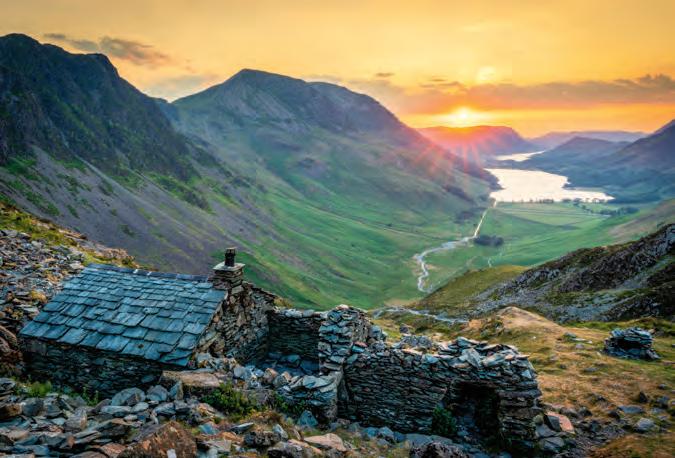
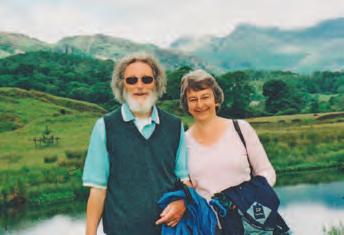
“It is a fitting tribute to their lives as the Lake District was dear to their hearts – being the place where they met on holiday and later married. The family look forward to hearing how future generations will benefit from their legacy gift and give encouragement to others in their support of Friends of the Lake District.”
– Valerie and Clare remember their sister Judith Sugdon and her husband John (pictured above), who left Friends of the Lake District a gift in their Will
Got a question or want to get involved in raising money for Friends of the Lake District? Contact our Fundraising Manager, Claire Coburn, at claire.coburn@fld.org.uk or phone 01539 541214. Together, let's keep the Lake District and Cumbria thriving for many more years of adventure, beauty, and unforgettable memories.
Could you be one of our new trustees for 2024?
Do you love the landscapes of Cumbria and the Lakes? Do you want to join a passionate team of trustees eager to protect and enhance these landscapes?
2024 is an exciting year for the charity. We have a new strategic plan, and an enthusiastic staff and trustee team ready to tackle the many challenges facing our landscapes.
We’re interested in hearing from those with a passion for the Lakes and a willingness to help govern and guide Friends. Whether you have previous experience on charitable boards or are new to the world of trusteeship, drop us a line for an informal chat by emailing our CEO, Mike Hill at michael.hill@fld.org.uk.
Warnscale Bothy © Mark Hetherington – one of our 2023 photography competition entries